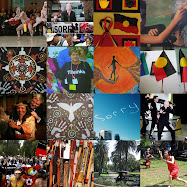

 The front of the temple complex - underneath, a lovely tea house, and above, a dining hall, meditation hall, reeception room, front shrine. Visitors are welcome to eat in the dining hall, where a couple of delicious vegetarian selections are cooked every day. The temple complex is built in the Chinese palace style, and some of these views reminded me of photos I've seen of Tibet. Then I read the info below on Wikipedia.
The front of the temple complex - underneath, a lovely tea house, and above, a dining hall, meditation hall, reeception room, front shrine. Visitors are welcome to eat in the dining hall, where a couple of delicious vegetarian selections are cooked every day. The temple complex is built in the Chinese palace style, and some of these views reminded me of photos I've seen of Tibet. Then I read the info below on Wikipedia. It was built was built using traditional techniques and materials by Chinese craftsmen.
The architecture incorporates the features of several styles of Buddhism. The pagoda is distinctly Chinese, with flying eaves and an angular profile. The main temples incorporates features of Tibetan monastic architecture, with multi-storey painted temple buildings set atop high stone platforms. The courtyards feature Japanese-style gardens, while the statues and shrines often incorporate bright, South-East Asian colour schemes, in contrast to the more sombre and austere styles favoured in China. The halls are carpeted, and pilgrims and visitors are required to remove shoes before entering, a practice more common in India, Korea and Japan than China.
From the Nan Tien website I have learned that:
"Chinese temple architecture has long been influenced by secular building design, especially that of imperial palaces. Structures and colours used throughout Nan Tien perpetuate this tradition. Grandiose roofs, visible from afar, indicate status: The greater the height and slope, the higher the rank. The Main Shrine thus has the most lofty and impressive roof. In dynastic China the colour yellow was used exclusively by the emperor. Hence, terracotta yellow roof tiles are symbols of importance, as are the yellow temple walls. Small mythical creatures lining the roof hips are traditional guardians against fire, a real danger in the days when the entire structure would have been built of wood. While much of Nan Tien's roof framing is largely made of steel, it mimics timber construction with painted end beams extending under the eaves.
Red is another auspicious colour associated with the emperor. It was used to cover imperial columns, beams, and lintels, as is also the case at Nan Tien. Palace balustrades were typically carved white marble; Nan Tien's concrete balustrades are fashioned in a similar manner and painted white. "
Red is another auspicious colour associated with the emperor. It was used to cover imperial columns, beams, and lintels, as is also the case at Nan Tien. Palace balustrades were typically carved white marble; Nan Tien's concrete balustrades are fashioned in a similar manner and painted white. "




Very nice! Was not expecting something like this in Sydney!!!
ReplyDelete